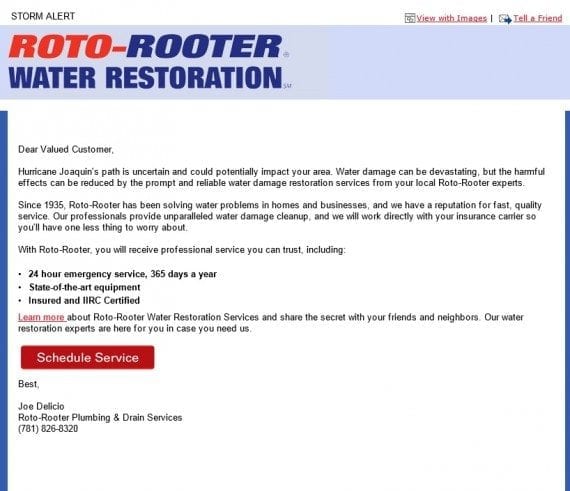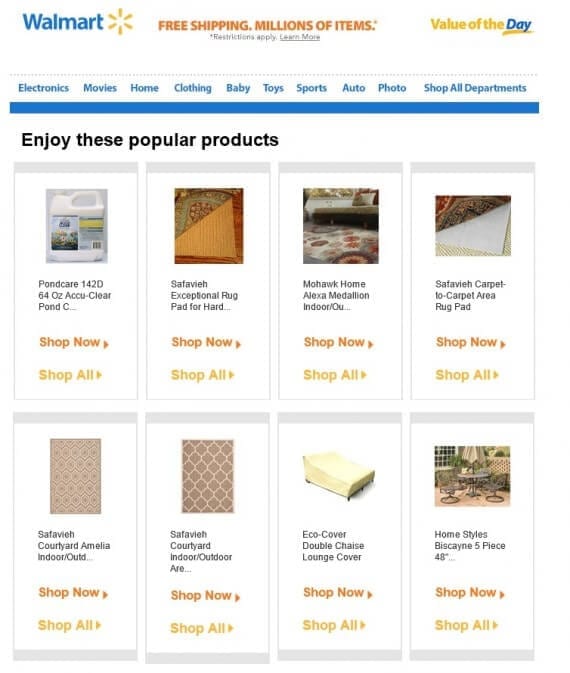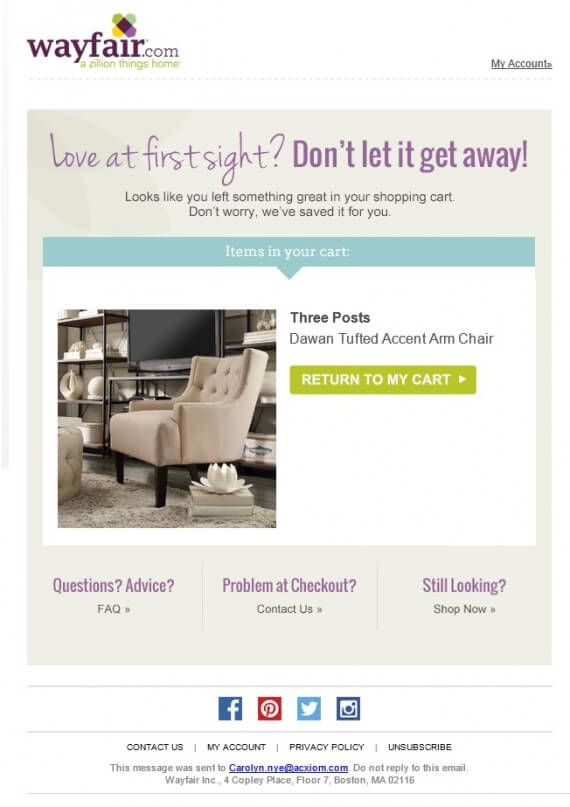Sometimes the success of an email marketing campaign can boil down to how much it grabbed the attention of recipients. In this post, I’ll review three examples of attention-grabbing emails.
Event-driven Email: Roto-Rooter
Events can create opportunities to let consumers know about a product or service you offer that they may not be aware of. Moreover, timing the email message can dramatically increase the attention it receives from recipients. The following email from Roto-Rooter is a good example of using an event to attract attention.

This email from Roto-Rooter was sent a few days before Hurricane Joaquin was set to hit the East Coast.
The subject line of this message from Roto-Rooter is “If the storm strikes, we handle water damage.” The message was well timed, hitting my inbox a few days before Hurricane Joaquin was set to hit the East Coast. The message was effective for several reasons.
- It was timed to coincide with a major weather event, thus attracting the attention of the reader.
- Roto-Rooter used the opportunity to inform customers of supplemental services that the customers may not be aware of. Most people are aware of the general plumbing services the company provides. However Roto-Rooter’s storm and water damage restoration services were unknown to me, a subscriber.
- Because the email offers help with unexpected damage, recipients will likely save it and refer to it later. The storm never reached the northeast U.S.; however, I kept this email for future reference, in case I need it.
Reactivation Campaign: Walmart
Over the summer I ordered an outdoor rug from Walmart.com. It’s a site that I don’t order from often. Since that last purchase, I haven’t visited the site, nor has it been top-of-mind when I shopped on different sites, even for products that Walmart may offer.
Walmart recently sent this email to me with the subject line “We Miss You :).“ It grabbed my attention because Walmart was referencing my last purchase.

This post-purchase email from Walmart falls short because the product recommendations are for similar items to what was already purchased.
Walmart is using the past purchase to populate the products in the email. This can be an effective strategy for retailers during pre-purchase email triggers, such as an abandoned cart or abandoned browse. However in a post-purchase “we miss you” email, it falls short because the product recommendations are for similar items to what I have already purchased — and I’m no longer looking for.
In addition, this email does not consider seasonality. I purchased this outdoor rug in the summer. Walmart’s recommendations include patio furniture and outdoor rugs, which, based on the current season in my location, the northeast U.S., doesn’t appeal to me.
Thus, despite getting my attention with the subject line and timing, Walmart’s email contains mistakes with the automated product placements.
Abandoned Cart: Wayfair
For larger product purchases, consumers will typically research, shop, save items in their carts, and otherwise take time to make a final decision. For example, I recently conducted an extensive search to find and purchase two chairs. I visited several websites, and browsed and saved a few chairs in my carts, to compare. I also visited brick-and-mortar furniture and antique stores looking for a similar product.
While researching products, I received the following email from Wayfair after leaving items in my cart for a few days. The subject line of this email was “Hey, remember me?” This was different than other abandoned cart emails, which made it effective.

This abandoned-cart email for a large-ticket item from Wayfair emphasized a good deal that may go away, due to limited stock.
The body of the email was compelling, with a large image of the item I had placed in my cart, and a message that read, “Love at first sight? Don’t let it get away!”
Wayfair used countdown tactics in my shopping cart, listing the number chairs in stock to entice me to make a purchase faster. This, combined with the messaging, made me feel as though I should purchase this product now or miss out on a good deal. Overall, Wayfair executed the entire process and communication well — to help sell a large-ticket product.




